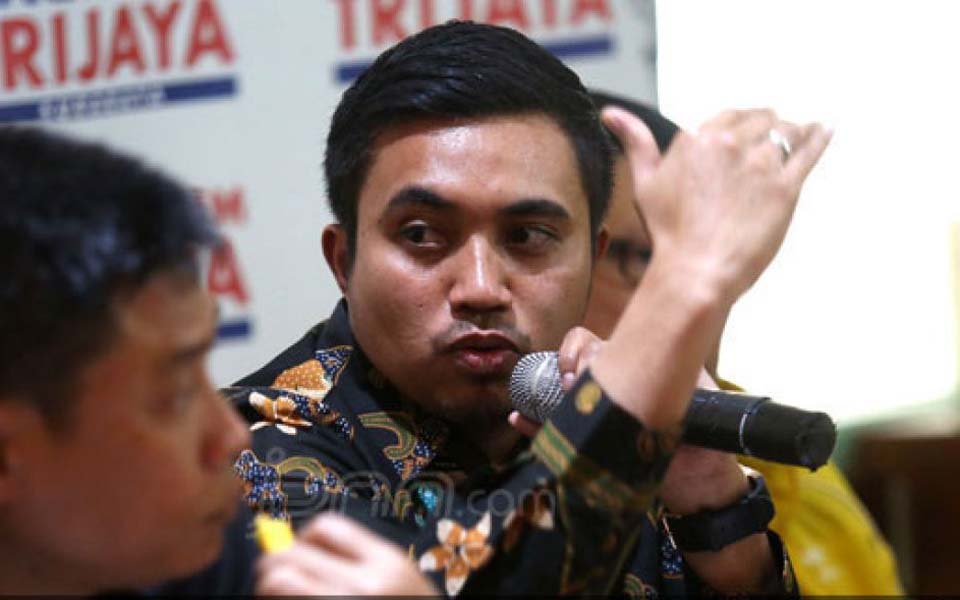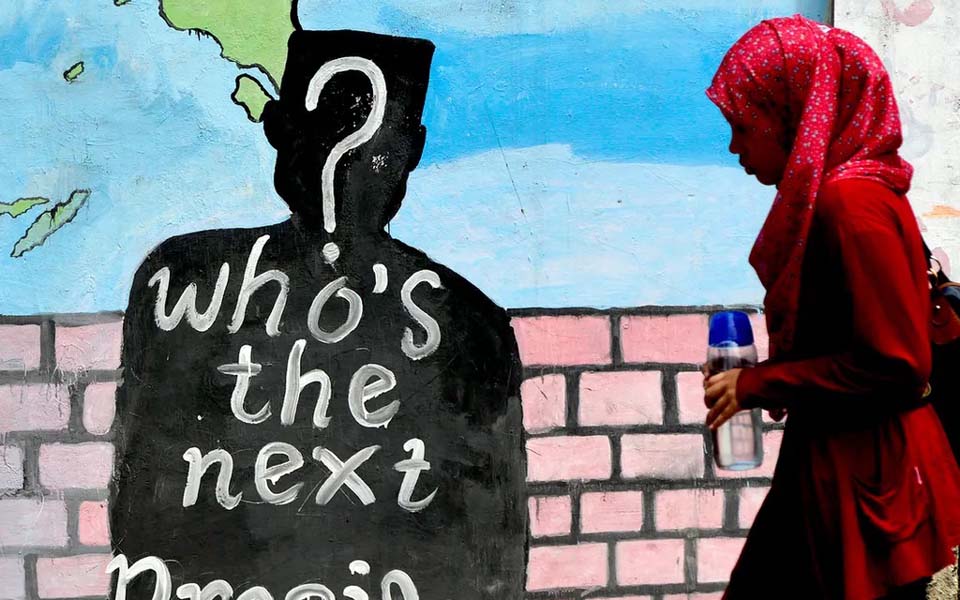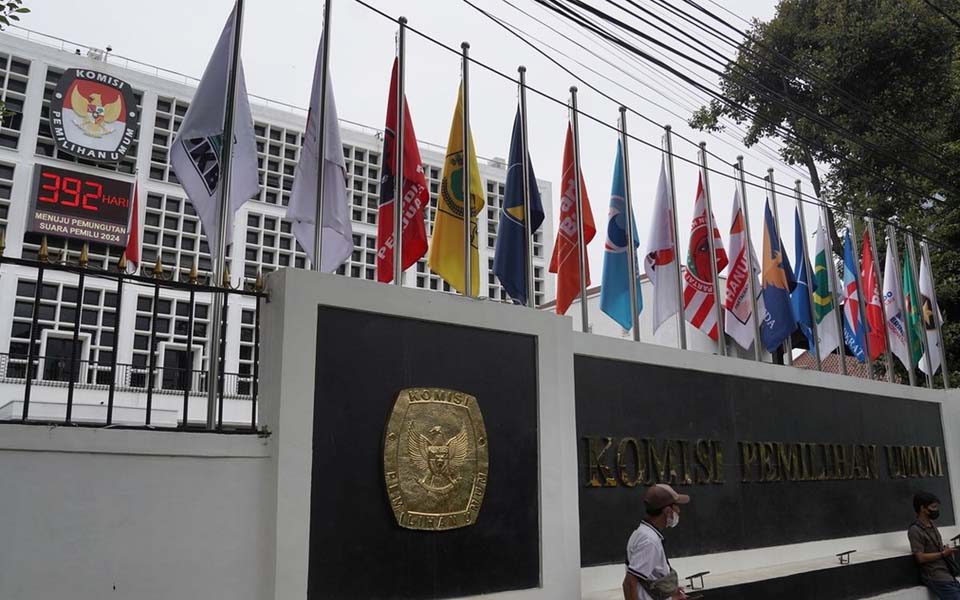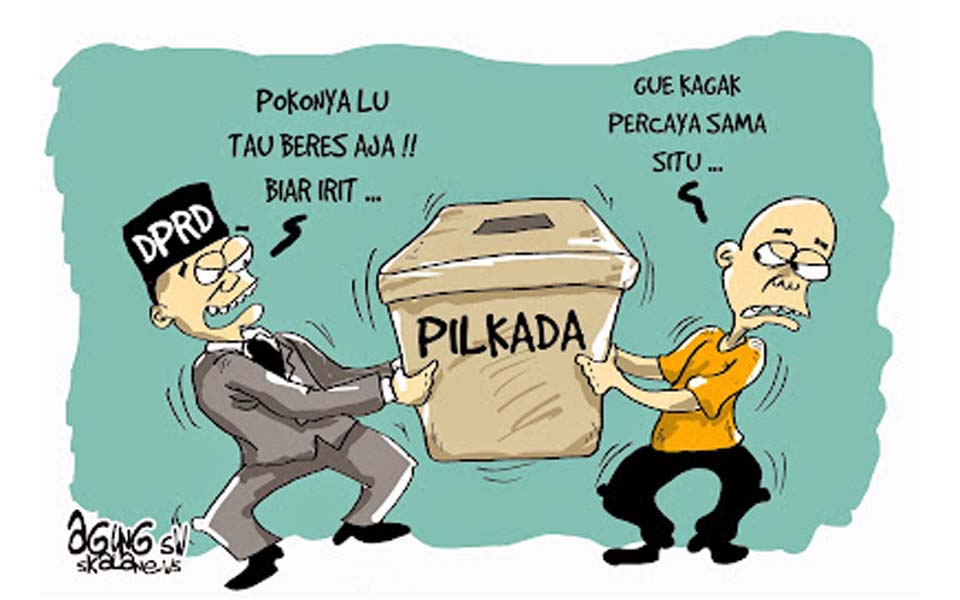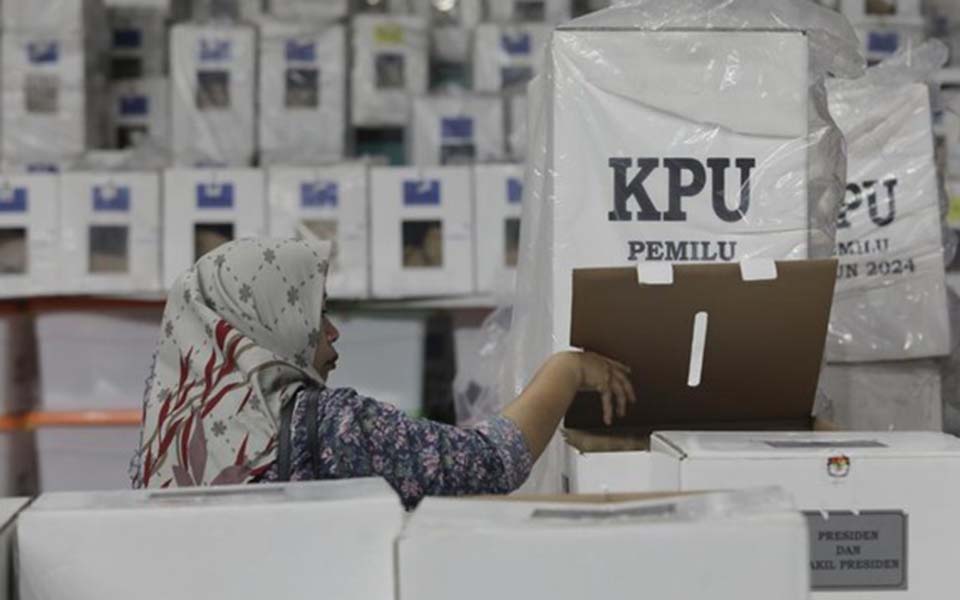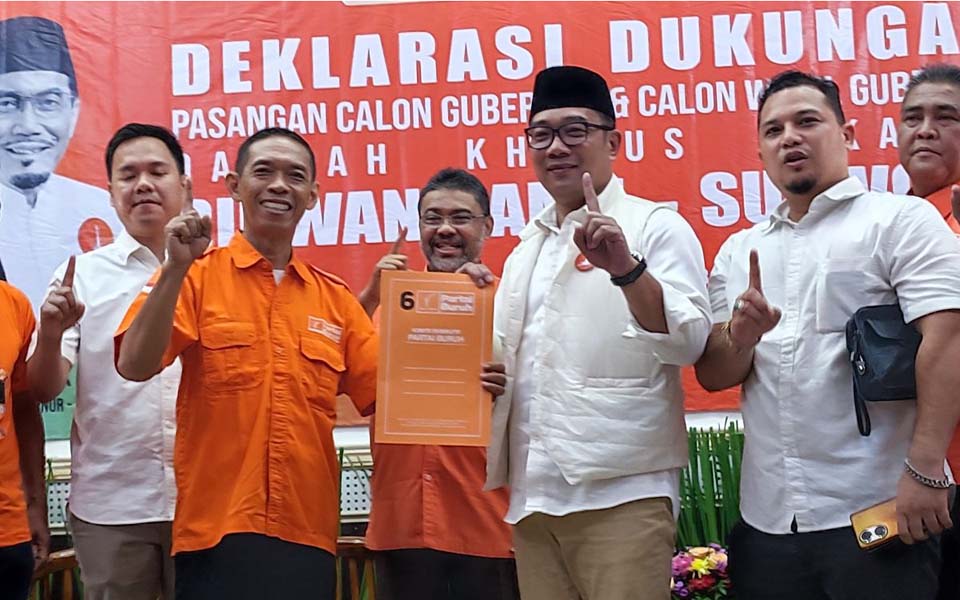Suwardiman – The geo-political map in the 2009 general elections could be very different from previous elections. Shifts in regional control may be largely coloured by the growth in the self-confidence of political parties following the election of regional heads (pilkada). Because of this, the rate of shifts in domination by the Golkar Party and the Indonesian Democratic Party of Struggle (PDI-P) may not be as smooth as in the past.
Following the collapse of former President Suharto’s New Order regime, political domination continued to be held by two long-term parties, the Golkar Party and the PDI-P. The Golkar Party was triumphant outside of Java and the PDI-P within Java Island. Over the last two elections however, the map of political forces has continued to change.
The political contest in the 1999 elections, which involved 48 political parties, was won by the PDI-P who garnered 33.74 percent of the vote, defeating the Golkar Party that only succeeded in winning 22.4 percent of the vote. The PDI-P succeeded in wining in 166 regencies/municipalities, while Golkar was only able to control 114 regions.
In the period following this, the Golkar Party again dominated the political map nationally. As many as 271 regencies/municipalities were controlled by the party with the banyan tree symbol with a total vote of 21.57 percent, while the PDI-P was only able to secure 89 regencies/municipalities with a vote of 18.53 percent. The party was also only able to defend 72 of its pockets of mass support, while loosing 22 others. Although the PDI-P was able to establish new pockets of mass support in 18 regencies/municipalities, the party failed to maintain general chairperson former President Megawati Sukarnoputri’s position in the number one seat in the country.
Java and Bali
The cutback in the PDI-P forces in the 2004 elections resulted in the party only being able to control 55 regencies/municipalities in Java and Bali. Whereas the strongest pockets of mass support for the PDI-P in the 1999 elections were precisely in these regions, with control of 142 regencies/municipalities.
This means that control of the regions in Java and Bali by the PDI-P declined drastically from 86.6 percent to only 44.4 percent. Conversely, the Golkar Party, which in 1999 was only able to win eight regencies in Java and Bali, succeeded in controlling 31 regions in the 2004 elections.
The decline in regional control by the PDI-P in Java and Bali benefited a number of mass based Islamic parties such as the National Awakening Party (PKB) and the United Development Party (PPP). The PKB increased its domination to 24 regencies/municipalities from 14 in 1999. This was also the case for the PPP, which was victorious in one additional region.
Many pockets of PDI-P mass support outside of Java and Bali also fell into the hands of other parties. The PDI-P’s wins in 69 regencies/municipalities outside of Java and Bali in 1999 was also eroded by half, leaving only 34 regions that they controlled in the 2004 elections.
The Golkar Party proved victorious in 240 regencies/municipalities or around 76.2 percent in regions outside of Java and Bali in 2004. The Justice and Prosperity Party (PKS), as a new political party, succeed in winning the vote count in 12 regions, half of which were on Java Island.
Pilkada and coalitions
By mid-2008, direct elections of regional heads had been held in at least 356 regencies/municipalities and 24 provinces. Many parties that had a strong mass base in the 2004 elections however, have proved unable to rely upon their previous electoral bases of support to ensure the victory of their candidates in regional elections.
The Golkar Party for example, failed to carry its gubernatorial candidate for North Sulawesi to victory. The party, which had an electoral base of support of 32.32 percent in the 2004 elections in North Sulawesi had to concede victory to the PDI-P. Golkar also failed to mobilise support for its gubernatorial candidates among its mass bases in West Kalimantan, South Sulawesi, South-East Sulawesi, West Java, West Sumatra and North Sumatra.
The strength of a particular party is clearly shown when the party concerned is the sole supporter of a candidate and not part of a coalition. Not many parties however, have had enough confidence to put forward candidates by themselves. Moreover for regions that are recorded as being their mass bases of support in the 2004 legislative elections, many political parties have entered into a coalition with other smaller parties in order to be able to successfully win regional elections.
An analysis of 352 regencies/municipalities and 24 provinces that held direct regional elections over the last three years, shows that 100 regents/mayors and eight governors were elected with the support of a sole party. The remainder were the result of party coalitions that effectively supported candidate tickets to the number one seat in a region.
The Golkar Party is recorded as the political motor that has most successfully pushed through its candidates to become regents and mayors. As many as 151 candidate tickets for regent/mayor were successful, with as many as 54 of these with the sole support of the party. This was followed by the PDI-P, which succeeded in pushing through 96 candidate tickets at the regional or municipal level, with as many as 26 of these being with the sole support of the party.
The PDI-P succeeded in being the sole supporter for six elected governors out of the 12 provinces that they contested. The Golkar Party was only able to support four elected governors, two of which were where the party was the sole supporter.
The change in the political map from the outcome of the general elections to the regional elections is most clearly depicted in regions where nationalist parties have a mass base of support, particularly in the shift of vote domination from Golkar to the PDI-P and visa versa.
At the regional and municipal level, Golkar was able to maintain 40 regions where it has a mass base of support by winning regional elections as the sole supporter of candidates. However Golkar lost in half of its pockets of mass support when it was the sole supporter in regional elections.
As many of four of these were won by the PDI-P as the sole supporter of a candidate ticket. The Golkar strongholds that were won by the PDI-P without forming a coalition with other parties were the regencies of North-East Timor, Bintuni Bay, Musi Rawas and North-West Maluku. At the provincial level, candidates from the PDI-P also took four Golkar regions without a coalition – North Sulawesi, Central Kalimantan, West Kalimantan and East Nusa Tenggara.
The PDI-P however lost in eight regencies/municipalities when it was the sole supporter of a candidate ticket.
Eight regions that were PDI-P mass bases of support in the 2004 elections were won by Golkar in regional elections without coalitions – the regencies of Karangasem (Bali), West Sumba, Blora, Boyolali, Purworejo, Klaten, Grobogan and East Lampung. At the provincial level, no Golkar gubernatorial candidate was victorious outside of the areas where they have a mass base of support.
Meanwhile, out of the candidates supported solely by the PKS, the party won in four regencies/municipalities. Two of these areas represented PKS mass bases of support in the 2004 elections, while two others were wrestled from pockets of Golkar and PDI-P mass bases of support, that is in Bekasi and West Bangka.
The National Mandate Party (PAN) has won a greater number of regional elections outside of its area of mass support. Out of the five regions where winning candidates were supported solely by PAN, three of these were Golkar bases of mass support – the regencies of Aceh Tamiang, South Pesisir, and Mount Kidul – and one PKB area, Lamongan.
The regional elections should be a test for the big parties as they head towards the great festival of democracy next year. From these elections, it should be possible to measure whether the mass bases of support held by a political party are real or just an illusion (Kompas Research and Development)
[Translated by James Balowski.]






